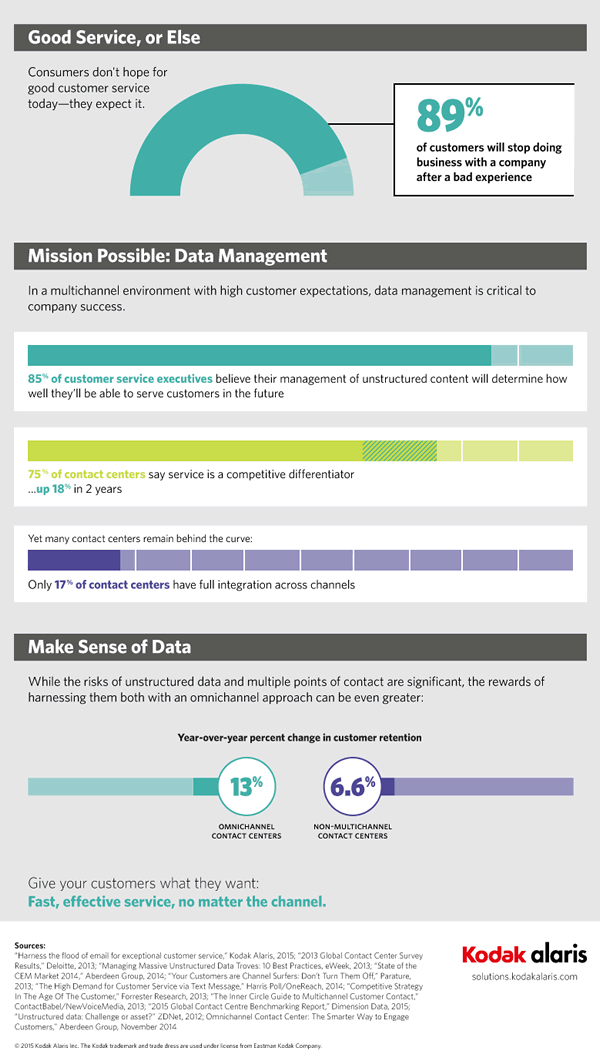Big data: it remains a phenomenon we still often look upon from the sheer volume instead of actionability perspective. With the – digital – data universe expanding at exponential speeds, it’s easy to lose ourselves in the overwhelming quantitative aspects.
Virtually each days new reports, predictions and infographics hit us showing how fast that universe grows. We take out our calculators and actually start talking about numbers we so far only learned about in the math classes we took as kids. Petabytes. Exabytes.
And it doesn’t end. Human DNA researchers warn us they are just getting started and will probably generate anywhere between 2 and 40 exabytes a year within the next decade. That is, to put it mildly, huge. And then there is the Internet of Things which will also power big data as Intel’s Louise Summerton recently reminded us (more below).
It doesn’t matter how much data you have – customer service and questions
A wise man once told me – long before we talked about big data – it doesn’t matter how much data you have. What matters is whether you have the right data you need to serve a customer better. And he gave a great example of how little data you sometimes need. It’s this awareness and growing maturity regarding data that makes us talk about smart data, data analytics and actionable data, to name just a few terms: move from volume to desired outcome.
Still, we know that the growing volumes, formats and “types” of data and content (mainly unstructured) we have regarding customers are a challenge for many contact centers and customer service departments. Especially if we want them to operate in close connection with the rest of the business, enabling a consistent and fast customer response across all those channels and sources customers – and we – now have.
Yet, the solution to this challenge is answering the question whether you have the right data as that wise man told me. Moreover, you need to ask yourself whether you have connected that data – and all the information and insights it contains – properly. And, last but not least: whether the right and properly connected data is analyzed and put into action to serve customers – in automated and where needed personal ways.
The customer drives the need for (connected) data (intelligence)
The crux of the matter isn’t really the data as such, even if it is a driver, needs to be managed and needs to make sense as the illustration below indicates.
The real driver is how customers, with all their channels, omni-channel behavior and clear demands for seamless switching between devices and channels – depending on their situation – seek support. And how they feed us more data than ever before to get the outcomes they desire when, where and how it suits them.
85% of customer service executives believe their management of unstructured content (including all that data) will determine how well they’ll be able to serve customers in the future the infographic shows. That percentage can only continue to grow as in reality we’re really still in the early stages of what’s yet to come for both customers and businesses and there still is a lot of work to close the customer service gap. But that’s for a next blog post.

The importance of customer service far beyond service itself can’t be ignored anymore. Nor can the need to make sense of data and ask ourselves if we ask the right questions to serve the customer as he expects.
We can make sense of all that data and turn it into mutual value. All it takes is starting to do it – asking questions.

